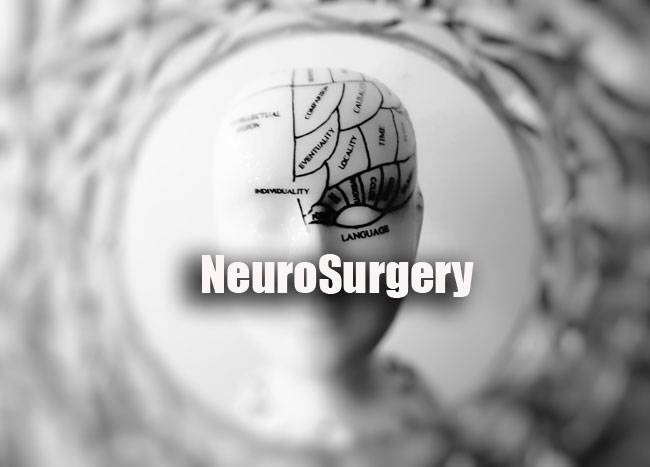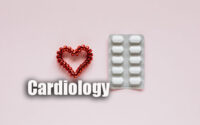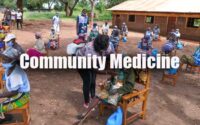Neurosurgery Questions and Answers
Neurosurgery Questions and Answers paper for the written examination is given below. Candidates who are looking for Neurosurgery exam Questions and Answers paper can find in this section. The applied candidates who are getting prepared for the Neurosurgery can view this page for the Neurosurgery Last Ten Years Questions and Answers Papers.

Download the Neurosurgery Questions and Answers & Solutions & make it as a reference for your exam preparation. Take advantage of these Neurosurgery Questions and Answers Papers in a proper manner to get qualifying Marks. Last 5 years Neurosurgery Questions and Answers Papers provided here. Candidates who are applied for the above exam can check and download the Neurosurgery Questions and Answers Papers from here.
Questions and Answers on Neurosurgery
1. Loss of corneal reflex is seen in all except:
(1) CP Angle tumour
(2) Carotid aneurysm
(3) Superior orbital fissure syndrome
(4) Caudal 1/3 of spinal trigeminal tract lesion
2. Correct match is:
(1) Downbeat nystagmus — Pineal tumour
(2) See-Saw nystagmus — INO
(3) Occular bobbing — Lesion in pontine tegmentum
(4) Ataxic nystagmus — Suprasellar tumour
3. SIADH – which of the following is false?
(1) Urine Na+ > 25 meq/L
(2) Serum Na+ 135 meq/L
(3) Serum osmolality < 280 mosm/kg
(4) Urine osmolality > serum osmolality
4. Critical TBI, GCS score is:
(1) GCS 9-13
(2) GCS 5-8
(3) GCS 3-4
(4) None
5. Denver Grading Scale, used for:
(1) Traumatic brain injury
(2) Blunt cerebrovascular injury
(3) Sub arachanoid hemorrhage
(4) Carotid artery dissection
6. All of the following IV anaesthetics reduces ICP except:
(1) Propofol
(2) Ketamine
(3) Etomidate
(4) Barbiturate
7. Most sensitive method of detecting Venous Air Embolism is:
(1) Transesophageal ECHO
(2) End tidal CO2
(3) Precordial Doppler
(4) Transcutaneous O2
8. Length of Bayonet forcep used for brain surface suitably:
(1) 8cm
(2) 9.5 cm
(3) 11 cm
(4) 10cm
9. Smallest Penfield dissector (No. 4) has width of:
(1) 1mm
(2) 2mm
(3) 3mm
(4) 4mm
10. Beyond Dura in neurosurgical procedure most common size of suction tube used:
(1) 7F
(2) 9F
(3) 3F
(4) 11F
11. Recommended suture size for MCA repair:
(1) 6-0
(2) 7-0
(3) 8-0
(4) 9-0
12. Most common lasor used in neurosurgery:
(1) Helium-Neon
(2) CO2
(3) Holmium
(4) Argon
13. Contraindications for Neuroendosurgery, all except:
(1) Uncorrected bleeding disorder
(2) Poor renal function
(3) Connective tissue disorder
(4) Overweight
14. The stain (contrast) feature, “arrives early stays late” is a feature of:
(1) GBM
(2) Medulloblastoma
(3) Lhermitte Duclos disease
(4) Meningioma
15. Following is used during WADA test:
(1) Papaverine
(2) Abciximab
(3) Sodium Amytal
(4) Eptifibatide
16. Treatment of ruptured aneurysm during Coiling include all except:
(1) Lowering of BP
(2) Deflation of ballon in ballon assisted coiling
(3) Injection of 500 mg Protamine
(4) Insertion of EVD
17. Drug of choice for Spasmolysis in cerebral vasospasm:
(1) Verapamil
(2) Papaverine
(3) Nimodipine
(4) Sodium nitroprusside
18. Most common traumatic brain injury is:
(1) Contusion
(2) EDH
(3) Concussion
(4) SDH
19. Regarding Central Herniation, Hyperventilation indicates which stage of herniation?
(1) Diencephalic
(2) Mesencephalic
(3) Pontine
(4) Medullary
20. True about EDH, all except:
(1) Crosses suture line
(2) Hitch sutures helpful
(3) Present between inner table & outer table
(4) Operable volume > 30 ml
| Practice Set | MCQs |
| Quiz | Questions and Answers |
21. Best investigation for spinal instability is:
(1) CT
(2) MRI
(3) Myclography
(4) Dynamic X ray
22. Late post-traumatic seizures Is:
(1) After 24 hrs
(2) After 7 days
(3) After 72 hrs
(4) After 14 days
23. True statement, all except:
(1) Antiepileptics reduces incidence of early post-traumatic seizures
(2) Antiepileptics reduces incidence of late post-traumatic seizures
(3) Immediate post-traumatic seizures occurs within minutes/hours of trauma
(4) Penetrating brain injury are high risk for post-traumatic seizures
24. “Classic “ appearance of EDH on CT occurs In of cases.
(1) 84%
(2) 90%
(3) 70%
(4) 88%
25. Poor prognosis in Gun shot injury associated with all except:
(1) Bullet that crosses the midline
(2) Bullet that traverse the ventricles
(3) Suicide attempts
(4) Bullet & bone chips in ipsilateral lobe
26. Growing skull fracture, true statements all except:
(1) Also known as Post traumatic leptomeningeal cyst
(2) Most common age > 3 yrs
(3) Most often presents as scalp mass
(4) Radiographic findings progressive widening of # & scalloping of edges
27. Head injury is considered minor if loss of consciousness is present for:
(1) <2 minutes
(2) <15 minutes
(3) <5 minutes
(4) <1 minutes
28. Which fracture should not be elevated?
(1) Depressed # over dural sinuses
(2) Compressed #
(3) Ping pong #
(4) Cosmetic deformity
29. SCIWORA is common in:
(1) Children
(2) Adult
(3) Old age
(4) Neonate
30. A patient presented after trauma with loss of sensation below hip joint & flaccid both lower limbs, which class of ASIA impairment scale he/she belongs to?
(1) A
(2) B
(3) C
(4) D
31. Stable spine fracture are all except:
(1) Hangman type
(2) Odontoid type 3
(3) Wedge compression #
(4) Hangman type 2
32. Clay Shoveler’s fracture:
(1) Avulsion of spinous process, usually C7
(2) Tip of odontoid #
(3) Occipital condyle #
(4) Anterior compartment # thoracic spine
33. Fracture line passing through region of sacral foramina (sparing central canal), classification grade:
(1) Zone 1
(2) Zone 2
(3) Zone3
(4) Zone 4
34. TLICS (Thoracolumbar injury classification & severity score) include all except:
(1) Radiographic compression #
(2) Speed of impact
(3) Root injury
(4) Cauda equine syndrome
35. In Denis 3 column model of spine middle column defines:
(1) Anterior half of disc & body
(2) Posterior half of disc & body
(3) Posterior arch
(4) Portion between ALL & PLL
36. Trajectory for C2 pedicle screws:
(1) Superiorly & medially
(2) Superiorly & laterally
(3) Inferiorly & laterally
(4) Inferiorly & medially
37. In severe head injury with raised ICP, level of PaCO2 in patients on ventilator support maintained at:
(1) 30-35 mmHg
(2) 25-30 mmHg
(3) 35-40 mmHg
(4) >40 mmHg
38. Most common vessel causing Trigeminal neuralgia:
(1) SCA
(2) AICA
(3) PICA
(4) BA
39. Treatment for Trigeminal neuralgia:
(1) Carbamazepine
(2) Sodium valproate
(3) Tramadol
(4) Etoricoxib
40. Diagnostic aids for CRPS aka Causalgia:
(1) Thermography
(2) 3 phase bone scan
(3) Osteoporosis on X-ray
(4) All
41. Most common complication following MVD for Vth neuralgia:
(1) Deafness
(2) Facial sensory loss
(3) Post operative hemorrhage
(4) CSF leak
42. SUNCT can be differentiated from Vth neuralgia:
(1) Unilaterality
(2) Stabbing shock like pain
(3) Lacrimation & conjunctival injection from onset of symptoms
(4) Long lasting attacks
43. MC complication of aneurysmal rupture:
(1) Hydrocephalus
(2) Rebleeding
(3) Vasospasm
(4) Hyponatremia
44. Cerebral angiography was performed by:
(1) Sir Walter Dandy
(2) George Moore
(3) Seldinger
(4) Egas Moinz
45. SAH can be caused by rupture of all of following vessels except:
(1) ACOM
(2) PCOM
(3) AICA
(4) Post choroidal artery


